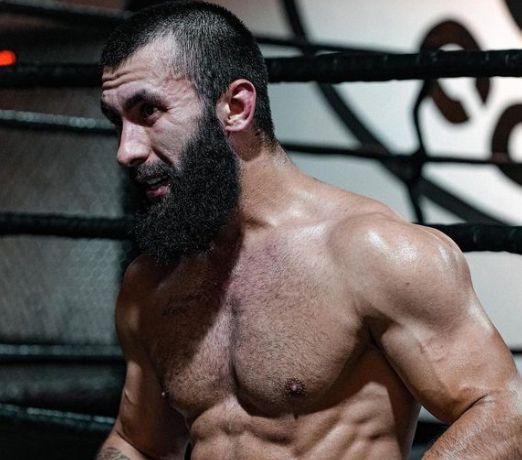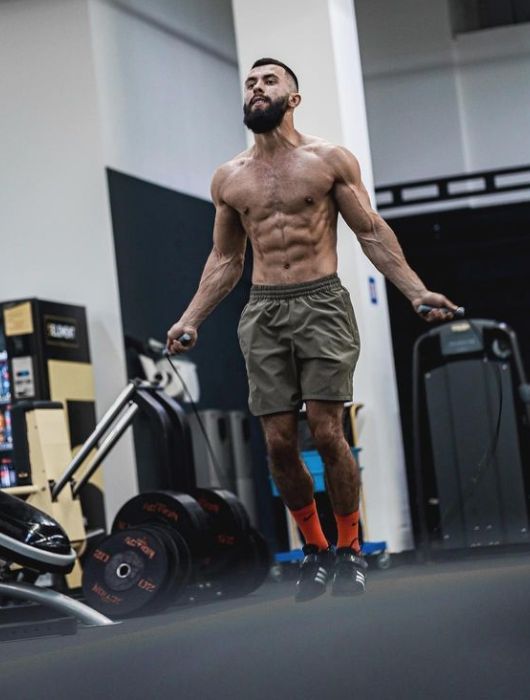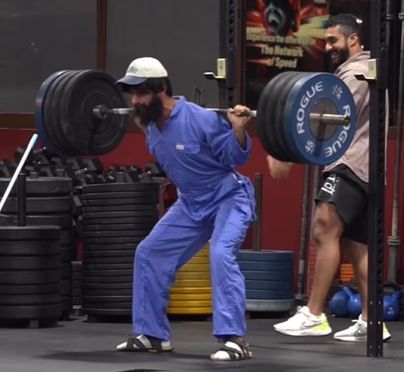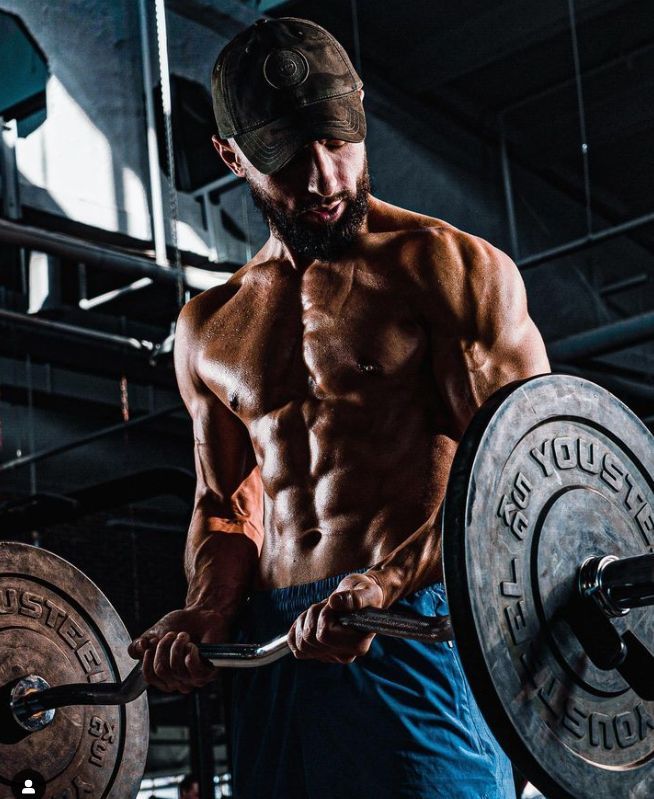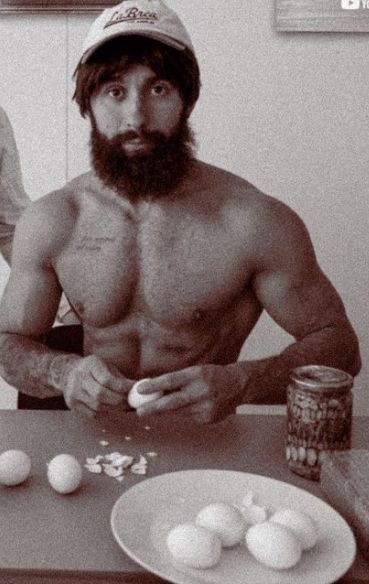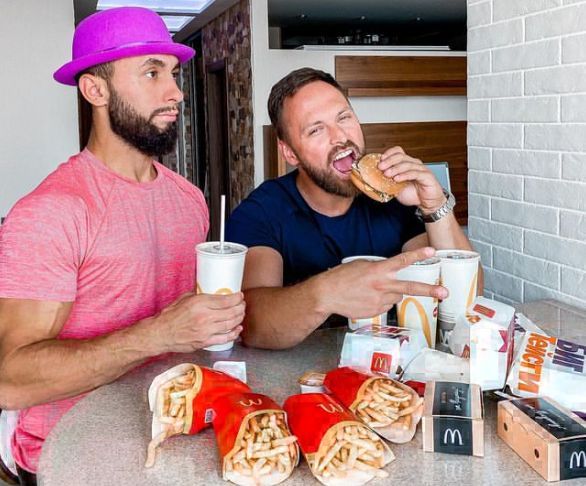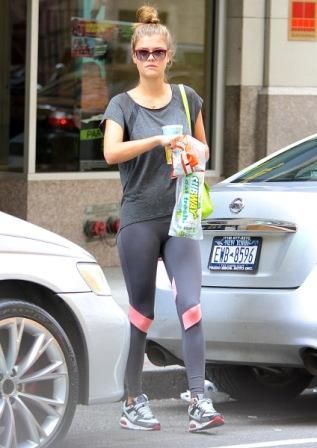Vladimir Shmondenko, a 24-year-old Ukrainian bodybuilder, began his weightlifting journey in 2016. Born in 1999 on a cattle farm near the quaint village of Krishtopovka, Vladimir’s passion for bodybuilding increased after discovering videos of American bodybuilders once his village gained internet access. He started working out with equipment made from wood, bricks, and old Soviet tractor parts, which showcased his immense dedication. At just 15, he consumed seven daily meals of cottage cheese and eggs and was teased at school for bringing oatmeal tubs. In the Teen 18-19 division of the 2018 GPA World Championships in Ukraine, he got the 3rd position. In this article we will discuss the workout routine and diet plan of this powerlifter.
Anatoly Powerlifter’s Body Statistics
- Birth Year: 1999
- Birth Date: 24 Years
- Height: 5’11/ 180 cm
- Weight: 80 kg/176 lbs
- Chest: 45 inches
- Waist: 34 inches
- Biceps: 15 inches
Anatoly Powerlifter’s Workout Routine
Anatoly’s workout plan is very focused on strength and endurance. His programs are well-structured and also include accessory exercises to strengthen weak points and reduce the risk of injury besides the major muscle groups. In an Instagram post, Anatoly shared his back workout routine which is done after a full-body warm-up, joint warm-up, and at least 7 minutes of cardio.
Back Workout:
1. Block Deadlift 2х5
2. Conventional Deadlift 2х2
View this post on Instagram
3. Dumbbell row 4х10
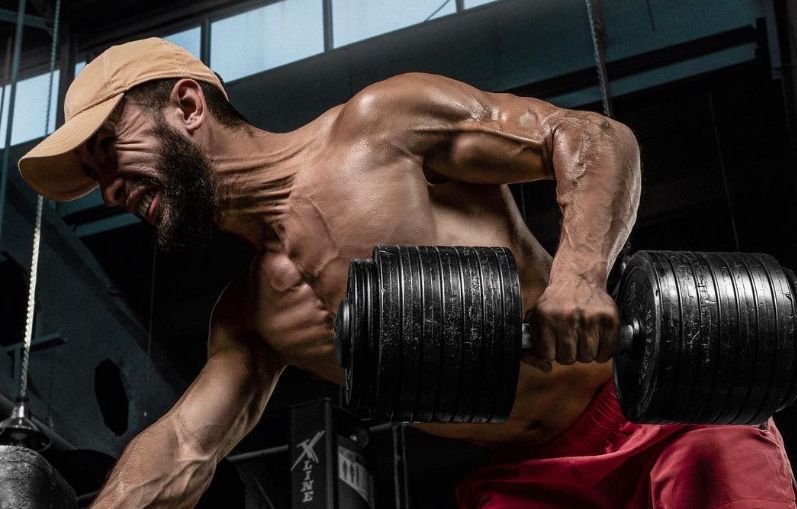
4. Lat pull down with close grip 4х12
5. Weighted pull-ups 3х6
6. Weighted hyperextension 3х2
While this is just one day of workout for Anatoly, here’s a sample workout routine of a powerlifter focusing more on major muscle groups.
Day 1: Squat Day
- Back Squats: 4 sets of 5 reps at 80% of your one-rep max (1RM)
View this post on Instagram
- Front Squats (for quad emphasis): 3 sets of 8 reps
- Romanian Deadlifts: 3 sets of 8 reps (for posterior chain development)
- Leg Press: 3 sets of 10 reps
- Calf Raises: 3 sets of 12 reps
- Planks: 3 sets, hold for as long as possible (core stability is essential for squats)
Day 2: Bench Press Day
- Bench Press: 4 sets of 5 reps at 80% of your 1RM
- Close Grip Bench Press (for tricep emphasis): 3 sets of 8 reps
- Dumbbell Flyes: 3 sets of 10 reps (for chest stretch and pec development)
- Overhead Shoulder Press (dumbbell or barbell): 3 sets of 8 reps
- Tricep Dips or Skull Crushers: 3 sets of 10 reps
- Barbell Rows: 3 sets of 8 reps (upper back strength to support bench)
Day 3: Rest/Active Recovery
- Consider light cardio, stretching, or mobility work.
Day 4: Deadlift Day
- Deadlifts (conventional or sumo, based on preference): 4 sets of 5 reps at 80% of your 1RM
- Deficit Deadlifts (for increased range of motion): 3 sets of 6 reps
- Barbell Glute Bridges: 3 sets of 10 reps
- Pull-Ups or Lat Pulldowns: 3 sets of 8-10 reps
- Face Pulls: 3 sets of 12 reps (for rear deltoid and upper back strength)
- Hanging Leg Raises: 3 sets of 12 reps (core stability for deadlifts)
Day 5: Accessory/Weak Point Training
- Paused Bench Press (pause at the bottom for 2-3 seconds): 4 sets of 5 reps at 70% of your 1RM (for building strength out of the bottom position)
- Box Squats or Paused Squats: 3 sets of 5 reps at 70% of your squat 1RM (developing explosive strength from a static position)

- Dumbbell Rows or T-Bar Rows: 3 sets of 8 reps each side
Day 6 & 7: Rest/Active Recovery
- Light cardio, stretching, or mobility work.
General Guidelines:
Anatoly Powerlifter’s Diet Plan
He eats about 3k-4k calories on a daily basis in four total meals. For breakfast, he eats toast, eggs, bacon, fruit, jelly dessert, and orange juice. His second meal consists of beef steak and pasta along with tomatoes. For his snacks, he has rice cakes with peanut butter and fruits like bananas and oranges. His fourth meal consists of chicken and potatoes. The meal plan might vary on an everyday basis where he substitutes for different foods.
Here’s a sample powerlifting diet:
Breakfast:
- 4 whole eggs, scrambled
- 2 slices of whole-grain toast with avocado spread
- Greek yogurt with mixed berries and a tablespoon of honey
- A banana
- Coffee or tea
Mid-morning snack:
Lunch:
- Grilled chicken breast or tofu
- Quinoa or brown rice
- Steamed broccoli and carrots
- Mixed leafy greens with olive oil and vinegar dressing
Mid-afternoon snack:
- Cottage cheese with sliced pineapple
- A handful of whole-grain crackers
Dinner:
- Grilled steak, fish, or legumes for vegetarians
- Mashed sweet potatoes with a pat of butter or olive oil
- Asparagus or green beans sautéed in garlic
- Salad with mixed veggies and feta cheese
Evening snack (especially if you train in the evening):
- Casein protein shake or a cup of milk
- Dark chocolate square (for those little cravings)
Hydration:
Supplements:
- Creatine for improved strength and performance
- Whey Protein
- Beta-alanine for buffering lactic acid
- Fish oil for joint health and inflammation
- Vitamin D and multivitamins, especially if their diet is not diverse
Anatoly makes sure he is also enjoying his favorite foods apart from the strict workout meals. He loves to have pizza. He also has burgers, fries, and soft drinks every once in a while.
Anatoly Powerlifter’s Diet Tips
- Prioritize Protein: Adequate protein intake is essential for muscle recovery and growth. Aim for at least 1.2-2.0 grams of protein per kilogram of body weight, or even more if you’re in a muscle-building phase.
- Carbs are Crucial: Carbohydrates are the primary fuel source for high-intensity activities like powerlifting. Ensure you’re eating sufficient carbs, especially around your workout, to support energy levels and recovery.
- Healthy Fats: Include sources of omega-3 and omega-6 fatty acids in your diet. These can help with inflammation and joint health. Examples include fatty fish, flaxseed, walnuts, and chia seeds.
- Stay Hydrated: Hydration impacts muscle function and recovery. Dehydration can also affect your strength and power, so drink plenty of water throughout the day.
- Micronutrients Matter: Ensure you’re getting a range of vitamins and minerals by consuming a variety of vegetables, fruits, lean meats, and whole grains.
- Pre-Workout Nutrition: Consider having a meal 2-3 hours before your workout that consists of protein and complex carbohydrates. This ensures you have the energy to power through your session.
- Post-Workout Recovery: Consume a combination of proteins and carbs soon after your workout. This could be in the form of a shake or a meal. The idea is to kickstart muscle recovery.
- Limit Empty Calories: While it’s okay to indulge occasionally, limit foods and drinks that offer little nutritional value, especially when trying to manage body weight for competitions.
- Supplements: If considering supplements like creatine, beta-alanine, or branched-chain amino acids (BCAAs), do your research first and consult with a nutrition or fitness professional.
- Stay Consistent: Like training, the diet requires consistency. One day of overeating or undereating won’t make or break your progress, but consistently neglecting your nutrition will.

